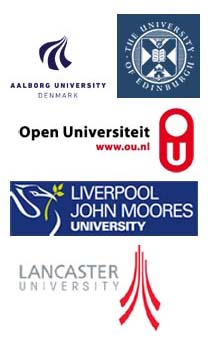

Synchronous or Asynchronous? That is the Question: Are Online Classrooms the Answer?
Jacqui Basquill, Faculty of Education, Edge Hill University
As distance and blended learning becomes more popular with both students and Higher Education Institutes (HEI), methods of developing student engagement and experience are becoming increasingly more important. This investigation examines a case study of three programmes delivered at one HEI. The programmes were part of a pilot project employing an online classroom to develop synchronous communication. This study examined the development of a Networked Learning Community using both synchronous and asynchronous communication. The findings highlighted a variety of issues such as the importance of tutor experience of online teaching, positive experiences using the online classroom which develops social capital, enhances students’ self motivation and the importance of preparing students to engage with online programmes before they begin.
Distance learning is growing rapidly, increasing the need for effective communication strategies (Allen & Seaman, 2011; Durrington et al 2006). As there is little or no face-to-face interaction, it is important for online instructors to establish their presence in the course to ensure students feel there is a familiar presence with whom they can relate to. There are a variety of ways to accomplish this, through communicating with students on a regular basis, sharing course content, and building a sense of community within the class (Palloff & Pratt, 2003). Using web 2.0 tools can enhance instructor presence through a wide array of collaborative learning experiences (Solomon & Schrum, 2010), one way of addressing this issue is to use an online classroom. There are a many on line classrooms available to Higher Education Institutes (HEI) and there is a lot of evidence to support their use in blended/distance programmes (MacDonald, 2008). Studying the current module has developed my interest in methods of communication and student engagement in order to develop a Networked Learning Community (NLC). Improving student engagement in an online programme is an on-going issue that many researchers are trying to find the answer to. This paper investigates the findings from a project using an online classroom involving fifteen programmes which have used synchronous communication to support the online students' experience. The findings highlight the importance of tutors understanding the different needs of online students and how traditional pedagogy must be adapted to meet these needs in an online environment. Use of a combination of synchronous and asynchronous approaches was found to have the most success, however tutor presence was the essential element in ensuring student satisfaction and achievement.
Keywords
Synchronous, asynchronous, communication, networked learning, community
| Invited Speakers | Community & Hot Seats| Past Conference Proceedings | Doctoral Consortium | Contact |